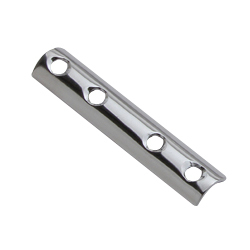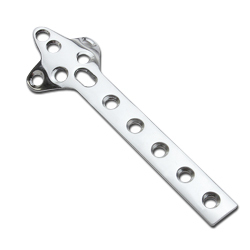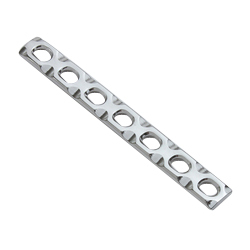Surgical bone Plates made of stainless, Vitallium or titanium types
The orthopedics surgical bone plates used in correction and reunion of the fractured bone with the help of screws. The surgeon prefers the correct plates according to the patient’s body and bone types.
The plates were available in different size and shapes for the fixation during surgery. The plates made of metal or alloy have certain specific characters like
Anti-corrosive materials
Non Reactive or less reactive the bones and tissue
Anti Magnetic materials
Anatomically Adjustable
Nowadays the biologically made plates are available in market
Types of plates
By fragments
- Standard plates
- Broad plates
- Small fragment plates
- Mini fragment plates
According to the uses
Neutralization plate
Used in conjunction with interfragmentary fixation to reduce the shearing stress at the fracture site. The plate strongly provide the compression over the fractured bone
Neutralize and protects lag screw from shear, bending, or torsional forces across the fracture
Bridge plate
Bridge plate: Used in severely comminuted fracture. It spans the fracture site and screws are placed only in the proximal and distal fragments.
Wave plate: The bent bridge plate where the space created by the bend allows the bone graft to be placed in it.
Tension band plate: When a plate applied on the tension side of the bone, the tension force gets converted into compression force as the bone tends to bend the plate and the plate tends to straighten the bone (e.g. humerus-posterior; radius—posterolateral; femur-anterolateral). Dynamic compression achieved when the patient bears weight or moves the limb.
Buttress plate: (Buttress-to support) A special design of plate which is Tor L-shaped and side specific. It can be further contoured intraoperatively. Used in specific sites like proximal humerus, distal radius, proximal and distal tibia
 Applied to metaphyseal fracture to support intra-articular fragments
Applied to metaphyseal fracture to support intra-articular fragments
used in exact contouring to the bone anatomy when necessary, other option like pre-contoured anatomical plates
Types of screw access here
Types of bone plates in commercial use
Plates character vary by following things, Straight, angled, flat or Tubular in shape
Condylar plates
Angular plates
Semi-tubular plates
Reconstruction plates
Titanium plates
PC-Fix: Point Contact fixation system
DCP- Dynamic Compression Plate
LCDCP Limited contact Dynamic Compression plate
Locking plates
Carbon fiber plates
Zespol plate: Plate in the subcutaneous plane
Biodegradable plates: Made of polyglactin or polymer plus polyester
Used in Fracture of radius, Ulna and humerus
LCDCP Limited contact Dynamic Compression plate
Deserve periosteal vascularity, impaired with DCP
Recon Plate
otherwise called reconstruction plate
It can mold into different shapes
Used in humerus bone fracture and clavicle bone fracture
Locking Plate
It has two conjoint holes
one with locking scr ew insertion
ew insertion
one more with non-locking screw insertion
The advantage of the well-structured length
useful for osteoporotic bones
Used in Proximal humerus, proximal and distal tibia and distal femur
Its hold and mechanical support to aligned fragments bones
Protects and bypass the fracture site

